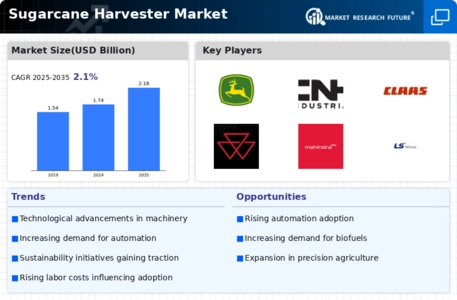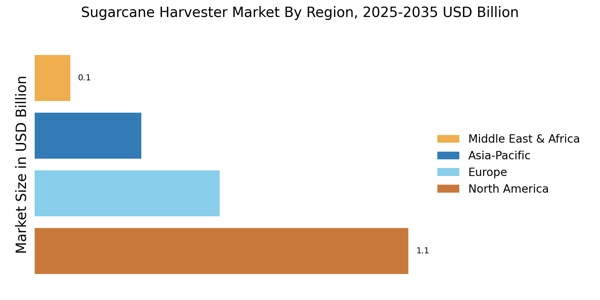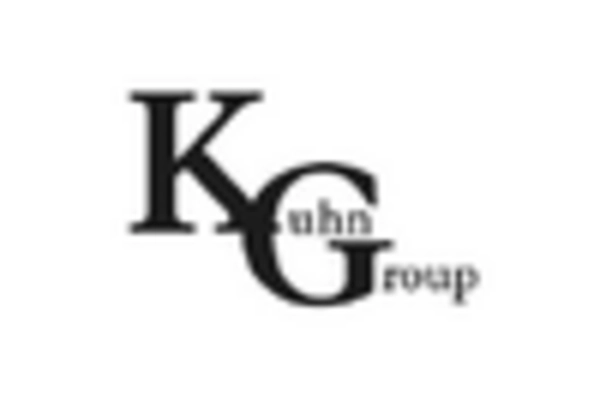Labor Shortages in Agriculture
Labor shortages in agricultural sectors are increasingly impacting the Sugarcane Harvester Market. Many regions are experiencing a decline in available labor, which poses challenges for traditional harvesting methods. As a response, farmers are turning to mechanization to maintain productivity levels. The adoption of sugarcane harvesters is seen as a viable solution to mitigate labor constraints. In 2025, it is anticipated that the mechanization rate in sugarcane harvesting will reach approximately 60%, reflecting a shift towards more automated processes. This trend not only addresses labor shortages but also enhances operational efficiency, thereby driving growth in the Sugarcane Harvester Market.
Government Support and Subsidies
Government initiatives and subsidies aimed at promoting mechanization in agriculture are playing a crucial role in the Sugarcane Harvester Market. Many governments are recognizing the need to modernize agricultural practices to improve productivity and sustainability. In 2025, various countries are expected to implement policies that provide financial incentives for farmers to invest in advanced harvesting equipment. Such support is likely to lower the initial investment barrier for sugarcane harvesters, encouraging wider adoption. This trend is expected to stimulate growth in the Sugarcane Harvester Market, as more farmers seek to enhance their operational capabilities through government-backed programs.
Rising Demand for Sugarcane Products
The increasing global demand for sugarcane products, including sugar, ethanol, and biofuels, is a primary driver for the Sugarcane Harvester Market. As countries seek to enhance their energy security and reduce reliance on fossil fuels, the production of ethanol from sugarcane has gained traction. In 2025, the sugarcane sector is projected to contribute significantly to the biofuel market, with estimates suggesting a growth rate of approximately 5% annually. This surge in demand necessitates efficient harvesting solutions, thereby propelling the adoption of advanced sugarcane harvesters. The Sugarcane Harvester Market is likely to benefit from this trend, as producers invest in modern machinery to meet the rising output requirements.
Increasing Focus on Sustainable Agriculture
The growing emphasis on sustainable agricultural practices is influencing the Sugarcane Harvester Market. As environmental concerns rise, farmers are seeking methods to reduce their ecological footprint while maintaining productivity. The adoption of sugarcane harvesters that minimize soil disturbance and optimize resource use aligns with sustainability goals. In 2025, it is projected that a significant portion of the market will be driven by demand for eco-friendly harvesting solutions. This shift towards sustainability not only enhances the reputation of sugarcane producers but also positions the Sugarcane Harvester Market favorably in a landscape increasingly focused on environmental stewardship.
Technological Innovations in Harvesting Equipment
Technological innovations are transforming the Sugarcane Harvester Market, with advancements in machinery design and functionality. Modern sugarcane harvesters are equipped with features such as GPS technology, automated controls, and improved cutting mechanisms, which enhance efficiency and reduce operational costs. In 2025, the market is witnessing a shift towards smart harvesting solutions that integrate data analytics for better decision-making. These innovations not only improve the harvesting process but also contribute to higher yields and reduced waste. As farmers increasingly recognize the benefits of adopting such technologies, the Sugarcane Harvester Market is poised for substantial growth.


















Leave a Comment